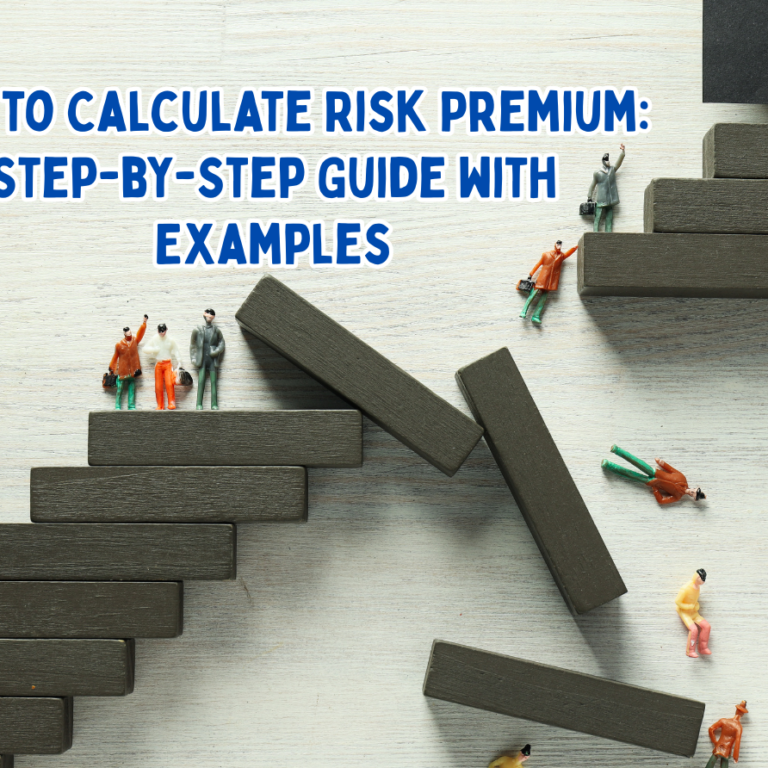Renter’s Insurance Explained: Coverage, Costs, and Peace of Mind
Introduction to Renter’s Insurance
Purpose and Explanation of Renter’s Insurance
Renter’s insurance provides essential protection for your personal belongings and liability coverage within your rental property. It acts as a financial safeguard, ensuring peace of mind in the event of unforeseen circumstances such as theft, fire, or accidental damage.
This type of insurance is a tailored insurance policy designed for tenants. Unlike homeowner’s insurance, which covers the structure of a home, renter’s insurance focuses on safeguarding the personal property of the tenant residing in a rental unit. It typically comprises two primary components:
Who Needs this Insurance?
Renter’s insurance is essential for anyone living in a rental property, regardless of their age, income, or the value of their belongings. This includes:
Myths About Tenant Insurance Debunked
It’s important to dispel common misconceptions about renter’s insurance:
In the following sections, we will delve deeper into the specific components of renter’s insurance, factors that affect coverage and premiums, and how to choose the right policy for your needs.
History of Renter’s Insurance
Origins of Property Insurance
The roots of property insurance can be traced back to ancient civilizations, but it wasn’t until the 17th century that it began to take on a more recognizable form. The Great Fire of London in 1666, a catastrophic event that destroyed much of the city, led to a surge in demand for fire insurance policies. These early policies were primarily focused on protecting buildings and their contents from fire damage.
Evolution of Renter’s Insurance in the U.S. As the United States experienced rapid urbanization in the early 20th century, more people began renting apartments and houses. This shift led to a growing need for insurance coverage specifically tailored to the needs of renters. Renter’s insurance policies gradually emerged as a standard offering in the insurance market, providing protection for tenants’ personal belongings and liability coverage.
The Rise of Modern Renter’s Insurance Policies Over time, renter’s insurance policies have evolved to provide broader coverage and cater to the changing needs of renters. As more people opted to rent rather than own homes, the demand for renter’s insurance increased. Modern policies often include additional features such as:
- Identity Theft Protection: This covers the costs associated with recovering from identity theft, such as legal fees and credit monitoring. Now there are many to choose from.
- Electronics Coverage: This provides enhanced coverage for valuable electronics like computers, smartphones, and gaming consoles. More can be added as market evolve.
- Renters Assistance: This offers financial assistance in case of unexpected events like property damage or eviction.
Recent Changes and Innovations The digital age has brought significant changes to the insurance industry, including renter’s insurance. Innovations such as mobile apps, online quoting, and personalized plans have made it easier for renters to obtain and manage their policies. Additionally, the rise of insurtech startups has led to new and innovative products and services, such as usage-based pricing and predictive analytics.
Why is It Important for renters?
Protection for Personal Property
One of the primary reasons to have renter’s insurance is to protect your personal belongings. If your rental property is damaged or destroyed due to a covered event such as fire, theft, or water damage, renter’s insurance can reimburse you for the value of your lost or damaged items. This coverage typically extends to furniture, electronics, clothing, appliances, and other personal possessions.
Liability Coverage
Another crucial aspect of renter’s insurance is liability coverage. This protects you from financial liability if someone is injured on your property or if you accidentally damage another person’s property. For example, if a guest slips and falls in your rental unit, liability coverage can help cover medical expenses and legal fees.
Temporary Living Expenses
Renter’s insurance can also provide coverage for temporary living expenses if your rental property becomes uninhabitable due to a covered event. This can include costs for temporary housing, meals, and other necessary expenses while your rental unit is being repaired or rebuilt.
Cost vs. Benefit
While the cost of renter’s insurance may vary depending on factors such as the value of your belongings, the location of your rental property, and your coverage options, it is generally quite affordable compared to the potential financial losses you could incur without it. Consider the cost of replacing your entire wardrobe, electronics, and furniture in the event of a fire or theft. The cost of renter’s insurance is often a small price to pay for the peace of mind and financial protection it provides.
Understanding Insurance Coverage
Personal Property Coverage Renter’s insurance typically covers your personal belongings, including:

- Electronics: Computers, laptops, smartphones, tablets, gaming consoles, and televisions.
- Jewelry: Rings, necklaces, bracelets, watches, and other valuable jewelry items.
- Clothing: Clothes, shoes, accessories, and other personal items.
- Furniture: Sofas, chairs, tables, beds, and other household furnishings.
- Appliances: Refrigerators, stoves, washers, dryers, and other appliances.
While most renter’s insurance policies offer coverage for personal property, there are often limits on specific categories of items. For example, there may be a limit on the coverage for jewelry or other valuable items. It’s important to review your policy carefully to understand the specific limits and coverage amounts.
Liability Protection
Liability coverage in renter’s insurance protects you from financial liability if someone is injured on your property or if you accidentally damage another person’s property. This can include medical expenses, legal fees, and property damage costs. For example, if a guest slips and falls in your rental unit, liability coverage can help cover the costs associated with their injuries.
Additional Living Expenses (ALE)
If your rental property becomes uninhabitable due to a covered event, renter’s insurance may provide coverage for additional living expenses (ALE). This can include costs for temporary housing, meals, and other necessary expenses while your rental unit is being repaired or rebuilt.
Optional Coverages
In addition to the standard coverage components, many renter’s insurance policies offer optional coverages that can provide additional protection. These may include:
Exclusions: What’s Not Covered?
While renter’s insurance offers comprehensive coverage for many situations, there are typically certain exclusions that are not covered. These may include:
It’s important to carefully review your renter’s insurance policy to understand the specific exclusions and limitations that apply to your coverage.
Types of Insurance Policies for renters
Actual Cash Value (ACV) vs. Replacement Cost Value (RCV)
Renter’s insurance policies typically offer two main types of coverage for personal property: Actual Cash Value (ACV) and Replacement Cost Value (RCV).
While ACV policies are generally less expensive, RCV policies offer better protection, especially for newer or high-value items.
Named Perils vs. All-Risk Coverage
Renter’s insurance policies can also be categorized based on the types of risks they cover:
- Named Perils Policies: These policies cover only specific risks listed in the policy, such as fire, theft, windstorm,and hail. If a loss is not caused by one of the named perils, it may not be covered.
- All-Risk Policies: These policies cover all risks unless they are explicitly excluded. This means that your belongings are generally covered for any loss or damage, except for exclusions listed in the policy.
All-risk policies typically offer broader coverage than named perils policies, but they may also be more expensive.
Factors That Affect Renter’s Insurance Premiums
Location The location of your rental property can significantly impact your insurance premiums. Factors to consider include:
Building Type and Security Features The type of building you live in and its security features can also influence your insurance rates. Factors to consider include:
Coverage Amount The amount of coverage you choose and your deductible will directly affect your premium. Higher coverage limits and lower deductibles generally result in higher premiums.
Personal Factors Several personal factors can also impact your insurance rates, including:
How to Choose the Right Insurance Policy
Assess Your Coverage Needs To choose the right renter’s insurance policy, start by assessing your coverage needs:
- Inventory Your Belongings: Create a detailed list of your personal belongings, including their estimated value.This will help you determine the appropriate amount of personal property coverage.
- Consider Liability Needs: Evaluate your potential liability risks. If you often entertain guests or have pets, you may need higher liability coverage.
Compare Different Providers Once you have assessed your coverage needs, it’s time to compare different insurance providers. Here are some tips:
- Research Insurance Companies: Look for reputable insurance companies with a strong financial rating. You can check ratings from organizations like A.M. Best, Standard & Poor’s, and Moody’s.
- Read Customer Reviews: Look for online reviews and testimonials from other customers to get a sense of the company’s customer service, claims process, and overall satisfaction.
- Get Quotes: Contact multiple insurance companies to get quotes for policies that meet your coverage needs. Be sure to compare the premium, coverage limits, deductibles, and any additional features offered.
Bundling and Discounts Many insurance companies offer discounts for bundling multiple policies, such as renter’s insurance and auto insurance. This can help you save money on your premiums. Additionally, you may be eligible for other discounts, such as:
By following these steps and carefully comparing different insurance providers, you can find the best renter’s insurance policy to protect your belongings and provide financial security.
How to File a Claim
What to Do After a Loss If your rental property is damaged or your personal belongings are stolen, take the following immediate steps:
- Ensure Safety: Prioritize your safety and the safety of others. If there is any danger, leave the property and contact emergency services.
- Document the Damage: Take photos and videos of the damage to your property and your belongings. This will help you document the extent of the loss.
- Contact Your Landlord: Notify your landlord of the damage or loss as soon as possible.
- Contact Your Insurance Company: Report the claim to your insurance company within the required timeframe.
Documenting Your Loss It is crucial to document your loss as thoroughly as possible. This includes:
Working with Insurance Adjusters Once you have reported the claim, your insurance company will assign an adjuster to investigate the loss. The adjuster will assess the damage, gather information, and determine the amount of compensation you are eligible to receive.
Timeline for Claims The timeline for resolving a claim can vary depending on the complexity of the case and the efficiency of the insurance company. However, you can generally expect the following steps:
- Initial Report: Report the claim to your insurance company as soon as possible.
- Investigation: The insurance company will investigate the claim and gather information.
- Evaluation: The insurance company will evaluate the damage and determine the amount of compensation you are eligible to receive.
- Payment: If your claim is approved, you will receive a payment to cover the cost of replacing your damaged or lost belongings.
To speed up the claims process, be sure to provide all necessary documentation promptly and cooperate fully with the insurance adjuster.
Renter’s Insurance Laws and Regulations
Federal and State-Level Regulations While there is no specific federal law mandating renter’s insurance, individual states may have regulations or mandates related to renter’s insurance. These regulations can vary widely from state to state, so it’s important to be aware of the specific laws in your state.
Some states may have laws that require landlords to provide renter’s insurance information to tenants or that mandate certain types of coverage for renters. Additionally, some states may have regulations related to claims handling, dispute resolution, or insurance company practices.
Landlord Requirements Landlords may require renters to have insurance as part of the lease agreement. This is often a condition of tenancy, especially in high-value or high-risk rental properties. If your landlord requires renter’s insurance, be sure to review the lease agreement carefully to understand the specific requirements and coverage limits.
It’s important to note that while landlords may require renter’s insurance, they cannot mandate a specific insurance company or policy. You have the right to choose your own insurance provider and coverage options, as long as they meet the landlord’s requirements.
By understanding the laws and regulations related to renter’s insurance, you can ensure that you are adequately protected and comply with any legal requirements.
Common Mistakes to Avoid with Renter’s Insurance
Underestimating Your Coverage Needs
One of the most common mistakes renters make is underestimating their coverage needs. Many renters may not realize the full value of their belongings or the potential costs of replacing them in case of loss or damage. It’s essential to conduct a thorough inventory of your belongings and consider factors such as inflation and the increasing value of technology when determining your coverage needs.
Not Reading the Fine Print
Another common mistake is failing to read the fine print of your renter’s insurance policy.Understanding the policy exclusions and limitations is crucial to avoid surprises in case of a claim. Pay close attention to the specific items covered, coverage limits, deductibles, and any waiting periods that may apply.
Not Updating Your Policy
It’s important to review and update your renter’s insurance policy periodically to ensure it continues to meet your changing needs. Significant life events such as purchasing new belongings, moving to a different rental property, or getting married may require adjustments to your coverage. By regularly reviewing and updating your policy, you can avoid gaps in coverage and ensure you have the protection you need
Future of Renter’s Insurance
Emerging Trends The future of renter’s insurance is marked by several emerging trends:
- Personalized, On-Demand Policies: The rise of insurtech companies is leading to the development of more personalized and flexible renter’s insurance policies. These policies can be tailored to individual needs, allowing renters to choose specific coverages and adjust their coverage levels as their circumstances change.
- Climate Change and Natural Disasters: The increasing frequency and severity of natural disasters, driven by climate change, are having a significant impact on the insurance industry. As the risk of natural disasters rises,insurance companies are developing more focused policies to address the specific needs of renters in high-risk areas.
- Technological Advancements: Technological innovations are transforming the way renter’s insurance is offered and delivered. Artificial intelligence (AI) is being used to automate underwriting processes, detect fraud, and provide personalized customer service. Blockchain technology has the potential to streamline claims processing and improve transparency. Data analytics is enabling insurance companies to better understand risk and develop more accurate pricing models.
- The Role of Big Data in Premium Calculation: Insurance companies are increasingly using big data and Internet of Things (IoT) devices to gather information about renter behavior and risk factors. This data can be used to develop more accurate pricing models and offer tailored coverage based on individual risk profiles. For example,renters who have smart home devices that monitor their property may qualify for discounts, as these devices can help prevent losses.
As the insurance industry continues to evolve, renters can expect to see more innovative and personalized options for protecting their belongings and financial security.
Step-by-Step Guide to Buying Renter’s Insurance
Step 1: Assess Your Needs Before purchasing renter’s insurance, carefully assess your coverage needs:
Step 2: Get Quotes Once you have assessed your needs, obtain quotes from multiple insurance providers. Here are some tips for comparing quotes:
Step 3: Review Coverage Options When reviewing policy options, consider the following:
Step 4: Purchase and Activate Your Policy Once you have selected a policy, complete the purchase process. This typically involves providing personal information, payment details, and signing the policy documents. Set your policy start date to ensure your coverage begins when you move into your rental property.
Step 5: Regularly Review and Update Your Policy It’s important to review your renter’s insurance policy annually to ensure it continues to meet your needs. As your circumstances change, such as purchasing new belongings, moving to a different rental property, or getting married, you may need to update your coverage.
Conclusion and Final Recommendations
Key Takeaways Renter’s insurance is an essential investment for anyone who lives in a rental property. It provides protection for your personal belongings, liability coverage, and temporary living expenses in case of unexpected events.By understanding the different types of coverage, factors affecting premiums, and how to choose the right policy, you can ensure that you have the appropriate protection in place.
Final Tips for Choosing and Maintaining Coverage
- Assess Your Needs Regularly: Periodically review your coverage needs to ensure your policy aligns with your current lifestyle and belongings.
- Compare Quotes: Obtain quotes from multiple insurance providers to find the best value and coverage options.
- Understand Your Policy: Carefully read your policy documents to understand the terms, conditions, exclusions,and coverage limits.
- Update Your Policy: Notify your insurance company of any significant changes, such as moving, purchasing new belongings, or getting married.
- File Claims Promptly: If you need to file a claim, report the incident to your insurance company as soon as possible. Provide all necessary documentation and cooperate with the adjuster.
- Consider Bundling: Explore potential discounts by bundling renter’s insurance with other policies, such as auto insurance.
The Importance of Re-evaluating Your Coverage Periodically It’s essential to review your renter’s insurance policy annually to ensure it continues to meet your changing needs. Factors such as changes in your lifestyle, the value of your belongings, and the cost of living can impact your coverage requirements. By regularly re-evaluating your policy, you can make necessary adjustments to ensure you have the appropriate protection in place.
By following these recommendations, you can effectively protect your personal belongings and financial security as a renter.






